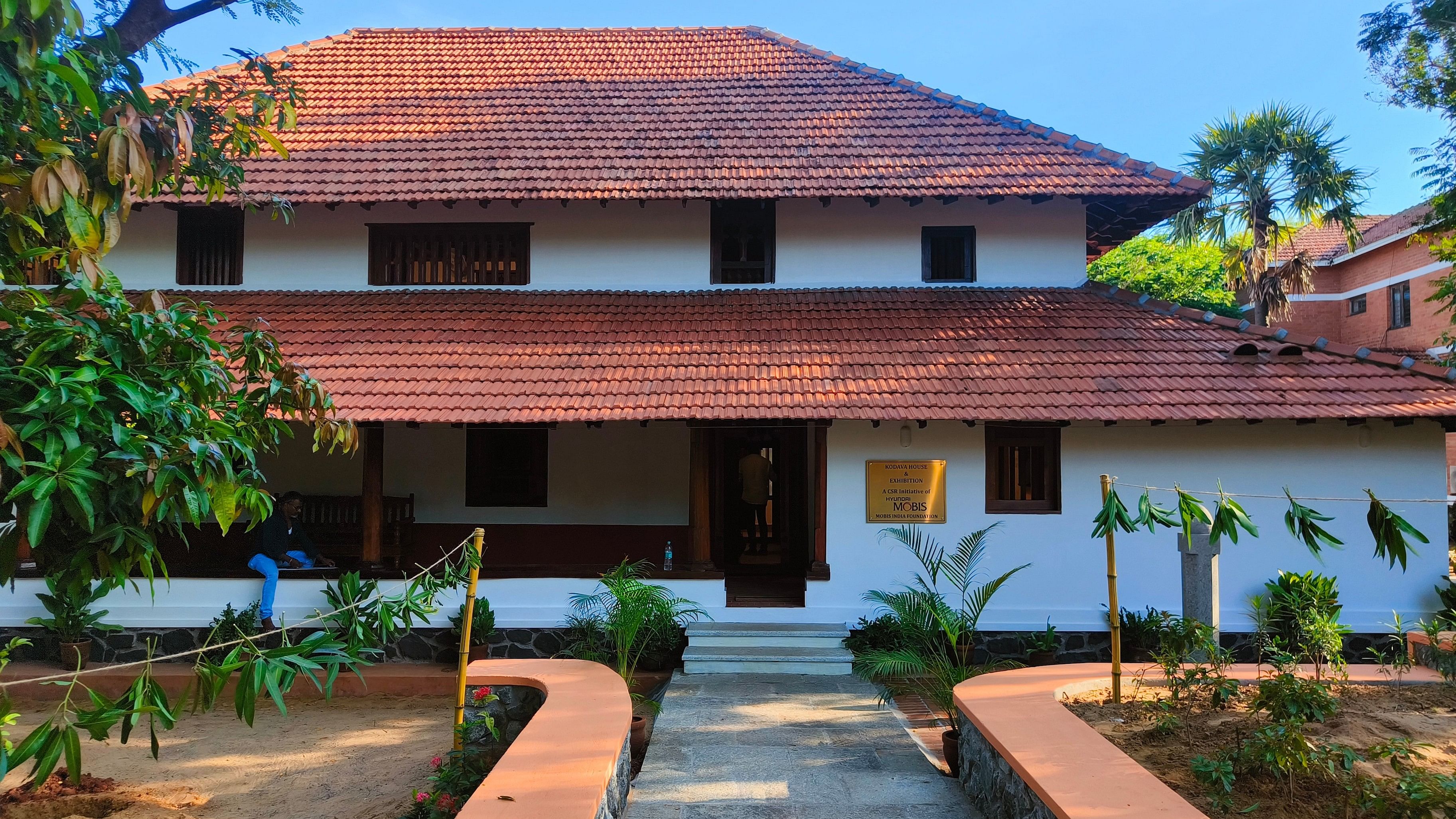
A view of the Kodava house.
Credit: Mookonda Kushalappa
On the way to Mahabalipuram from Chennai, lies a dedication to the heritage of south Indian architecture. This includes three traditional houses from Karnataka.
Dakshinachitra is a heritage museum built by the Madras Craft Foundation (MCF) in the 1990s. It currently has 19 ‘heritage houses’ from different regions and communities across the five southern states.
The Foundation purchased the original houses and recreated them here. These were measured precisely, dismantled under the supervision of experts, transported to Dakshinachitra and recreated. The portions that could not be carried were built.
Various architects and organisations were involved in the curation of each house.
Three traditional houses from Karnataka include: The Ilkal weavers’ house — a cluster of huts of weavers, whose village was flooded by a dam near Ilkal town in Bagalkot district. Ilkal is well-known for its handloom sarees. The Chikkamagaluru house was owned by a Muslim family in the Malnad region. This 1914 house originally belonged to K A Mohammed Ismail, a coffee planter and store owner whose forefathers moved from Turkey to Vijayapura. The house showcases the culture of various south Indian Muslims — from Deccani Urdu speakers to Malayali Muslims.
The latest addition, the Kodava house, is from Arapattu in Kodagu. It is an ancestral house dating back to the 1850s, which belonged to a branch of the Kodira family. Dakshinachitra has used the original wooden portion of the house in the replica. This is a two-storeyed house which hosts several elements showcasing Kodava culture.
In the style of a single-winged ainmane, the porch has traditional pillars and aimaras (wooden benches between ainmane pillars).The living space has another row of similar pillars and benches. One wall is the nellakki or the prayer corner, marked by a hanging lamp. The kitchen has three replicas of old stoves (oles) and contains several old utensils.
One room showcases the traditional wedding ceremony of the Kodava community. Another room has photos of Field Marshal Cariappa, General Thimmayya and the Coorg Regiment. A few mannequins in traditional costumes are on display. There are photographs of the elders of the Kodira family, among many other pictures of Kodagu and Kodavas.
A portion of the ground floor is dedicated to the Western Ghats, with pictures of various fauna and flora from the region, representing the biodiversity of Karnataka. One wall depicts the sacred groves, while another has paintings, idols, and crafts from the Malnad region. Besides Gonikoppa cane baskets and Panjurli (a wild boar deity worshipped by Tulu speakers) idols, there are terracotta pots and a painting in the Chittara art style, from the Shivamogga region, the work of the Deevaru community. These paintings, often comprising geometric designs, are drawn by women using jute threads as brushes to apply natural colours, during important ceremonies such as weddings and naming ceremonies.
On the first floor, one room is dedicated to the River Cauvery. Another room is designed to be a kaimada – an ancestral shrine of the Kodavas. An adjacent room has photos of different village festivals. One room has a video of C P Belliappa explaining the history of Kodagu. The last room has photos and videos of Kodava folk dances.